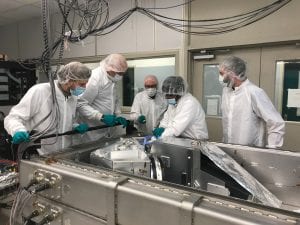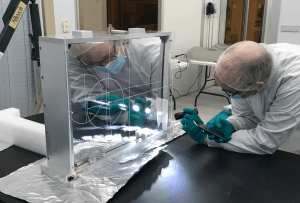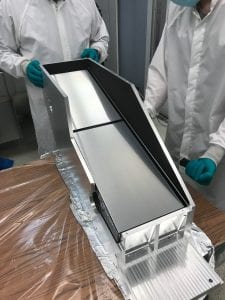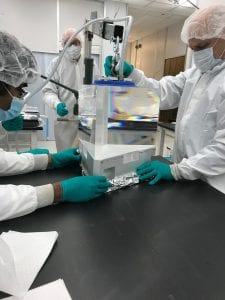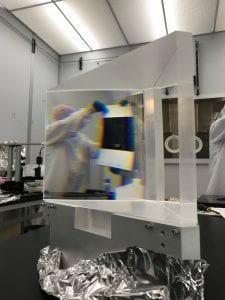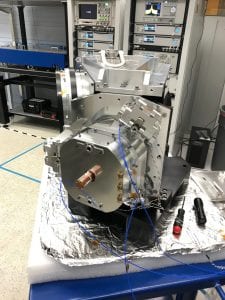After many months of careful coating and testing, all of NEID’s optical components have arrived safely at Penn State. For the instrument team, this means it’s go time. We’ve begun the process of adding optics to the instrument while our systems engineer, Andy Monson, begins the meticulous process of aligning the optical components. During this process we are also putting many components into the instrument for the first time. We will be fitting, checking, and double checking that all components fit the way we designed them and that nothing is in the way of the light path (or the “chief ray”) through the instrument.
Light enters the instrument through optical fibers that bring light directly from the focus of the WIYN 3.5m telescope at Kitt Peak National Observatory (where NEID will be commissioned in 2019). The first big component the light interacts with is a parabolic mirror.
NEID’s parabolic mirror redirects the light to the NEID echelle grating which splits the light into the many wavelengths that made up the original beam. To read more about how an echelle grating works and why they’re wonderful, see this post about HPF’s grating. The light, which the grating has spread into its separate wavelengths, is redirected by the parabola to the prism. The prism disperses the light side-to-side such that the light is now in a 2-Dimensional format.
The 2D format is important because we need the light to be recordable within the area of out 2D Silicon detector. To focus the 2D light’s foot print onto this detector, we have the NEID camera.
The detector records the light digitally which we use computers to search for tiny Doppler shifts in the spectra. These shifts in the stellar spectra may indicate the presence of a planet around that star. To get light to the detector, our Alignment, Integration and Verification phase must go well. Wish us luck!

